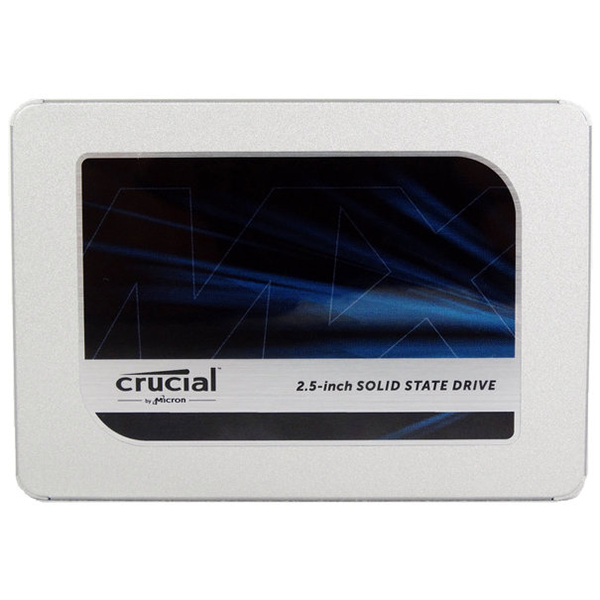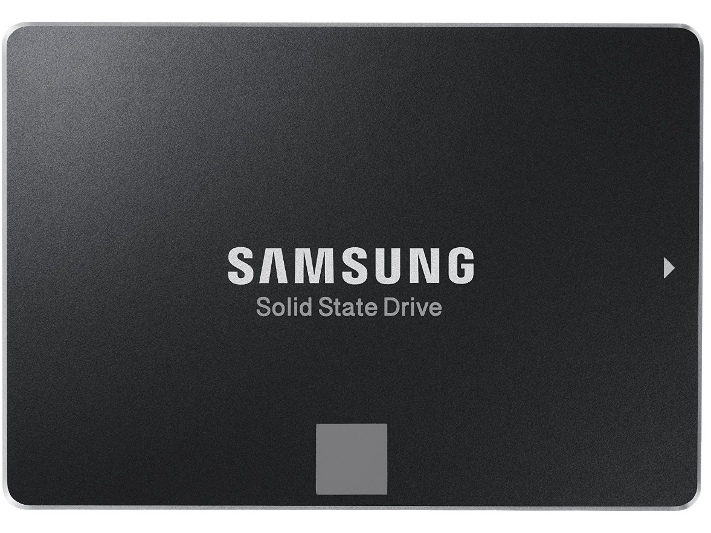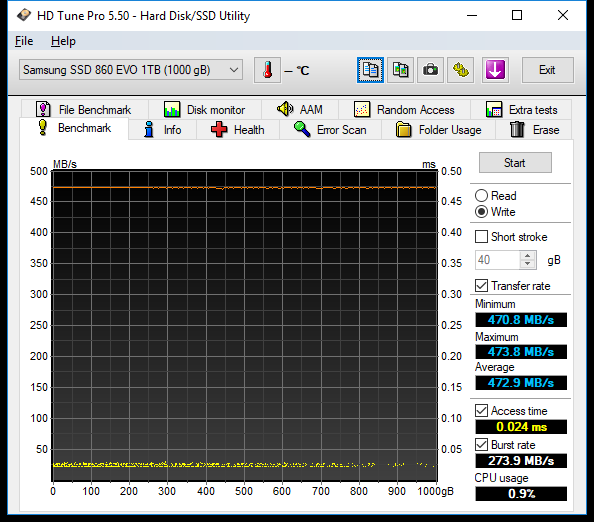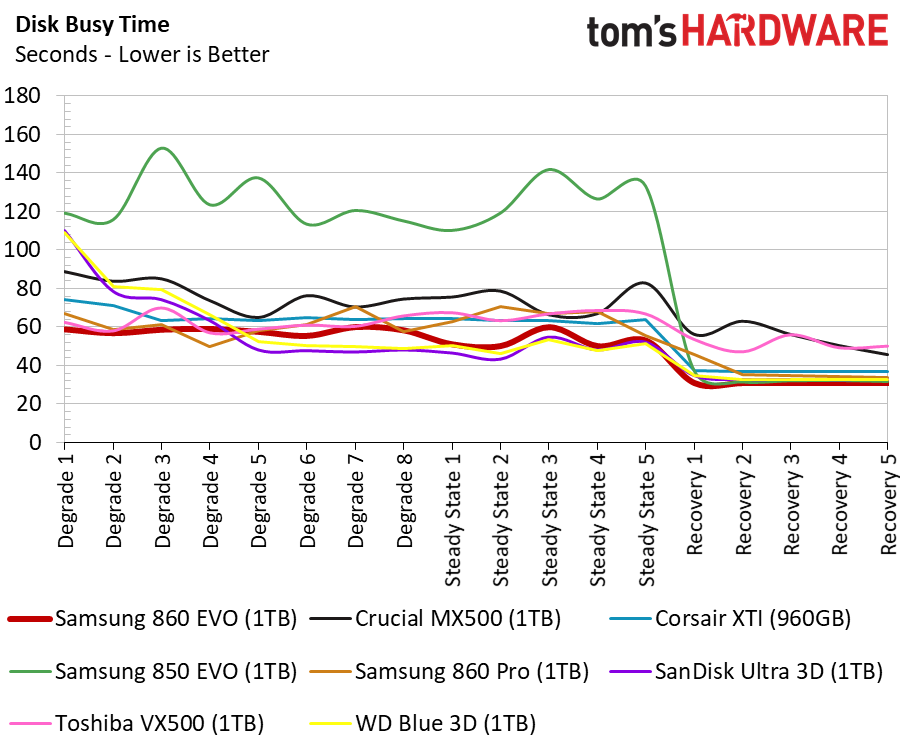The 860 EVO Review: Samsung Back On Top
Why you can trust Tom's Hardware
Comparison Products
It's been awhile since the SATA EVO series had a quality competitor with the real potential to displace the king of consumer storage. Three products that came during the end of the 850 EVO's reign stand out. The SanDisk Ultra 3D and Western Digital Blue 3D came to market in mid-2017 and closed the performance gap with SanDisk's BiCS flash. At the end of 2017, Crucial's MX500 became the first consumer SSD to move past the 850 EVO. It uses Micron's 64-layer 3D TLC.
The Corsair Neutron XTI and Toshiba VX500 are both high-performance SSDs, but high prices and lackluster low queue depth (QD) performance made those products easy to overlook in favor of the 850 EVO.
Sequential Read Performance
To read about our storage tests in-depth, please check out How We Test HDDs And SSDs. We cover four-corner testing on page six of our How We Test guide.

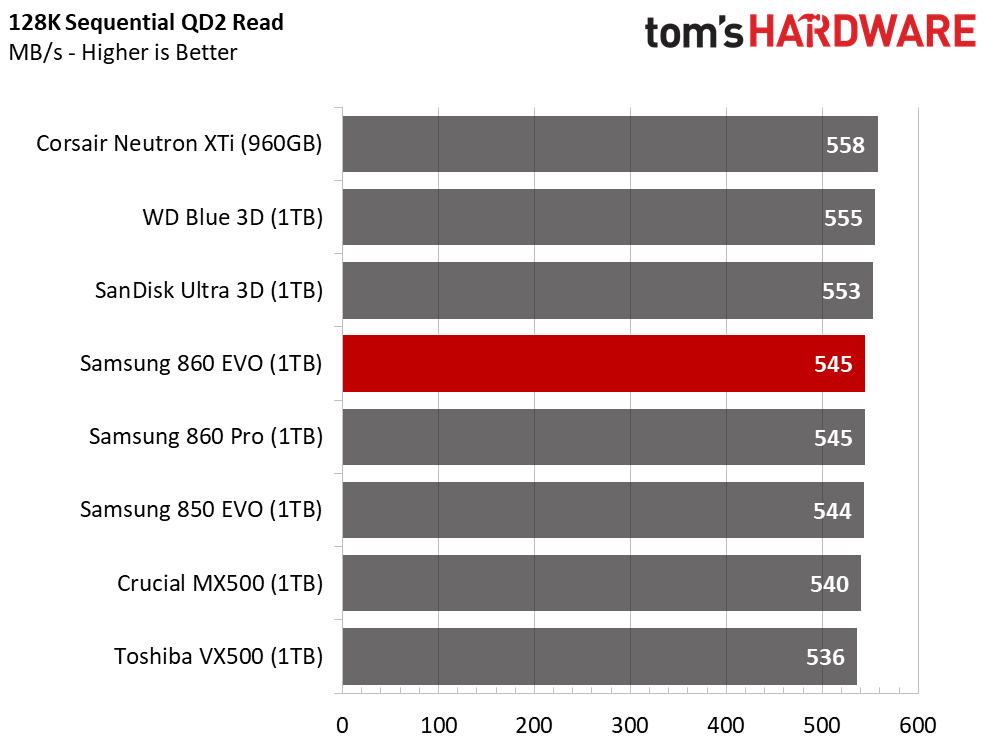
High-capacity drives with optimized controllers and flash easily reach the limits of SATA during simple sequential read and write workloads.
Sequential Write Performance
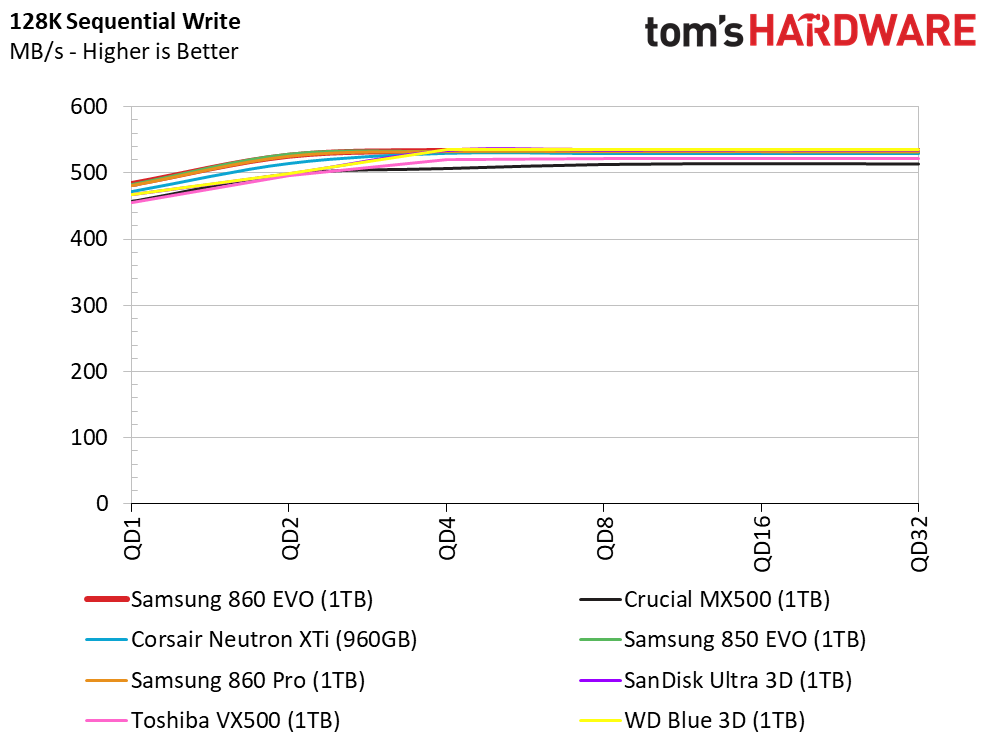

We have to go beyond burst performance to find significant differences. Many of the new products with 64-layer NAND and more than a few die can saturate the SATA bus even when operating outside of the SLC buffer. As a result, there is very little variation in our new burst tests.
Sequential Sustained Write Performance
The 1TB 850 EVO can saturate the SATA bus, so it doesn't come as a surprise to see the new 860 EVO doing the same. Samsung's TurboWrite SLC cache is superior to most caching algorithms from other companies. In the screenshot above we see the result of a QD1 128KB write to the 1TB 860 EVO. This workload is the same as transferring a single file to the drive, except here we write one large file to the entire usable LBA range. The performance is consistent and free of any noticeable performance degradation as the workload transitions from the TurboWrite (SLC cache) to native TLC NAND.
Random Read Performance
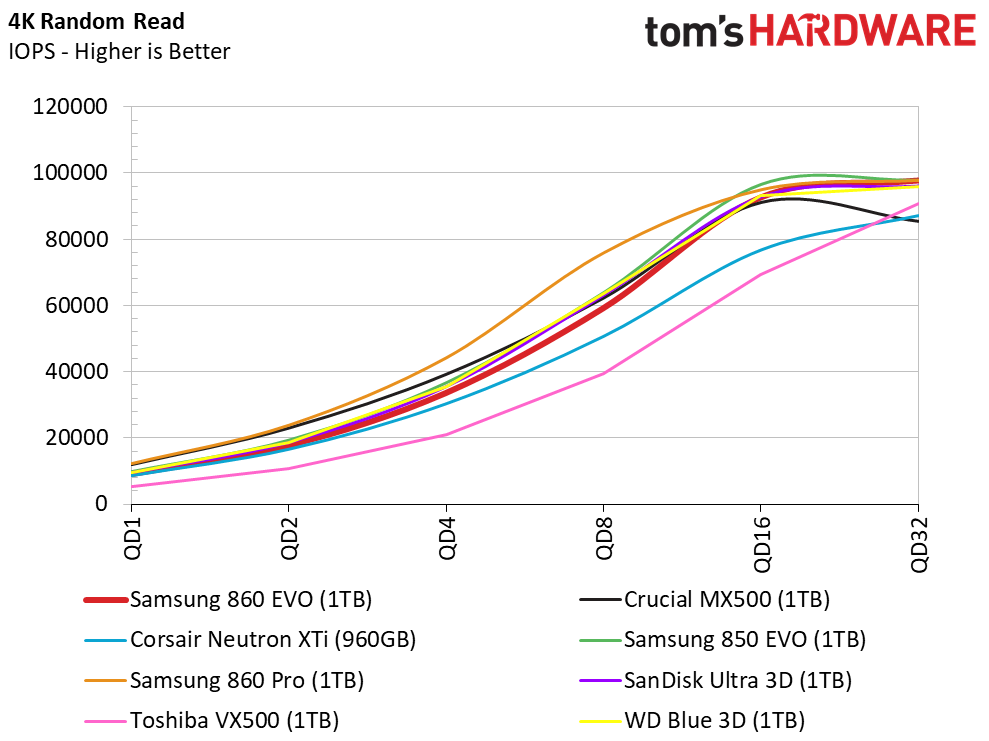


Samsung is one of the few companies to list QD1 random read and write specifications. Samsung claims up to 10,000 4KB random read IOPS at QD1. Our new burst test shows us slightly less than 10,000 IOPS, but our older test produced 11,715 IOPS. In fairness, all of the SSDs score higher with the older test.
Get Tom's Hardware's best news and in-depth reviews, straight to your inbox.
We begin to see the differences between the 860 and 850 EVO and the Crucial MX500, which currently offers the best overall SATA value. The MX500 delivers higher random read performance at low queue depths. This is one of the most important aspects of performance that relates directly to the user experience. Mixed random workloads also play a large role.
Random Write Performance
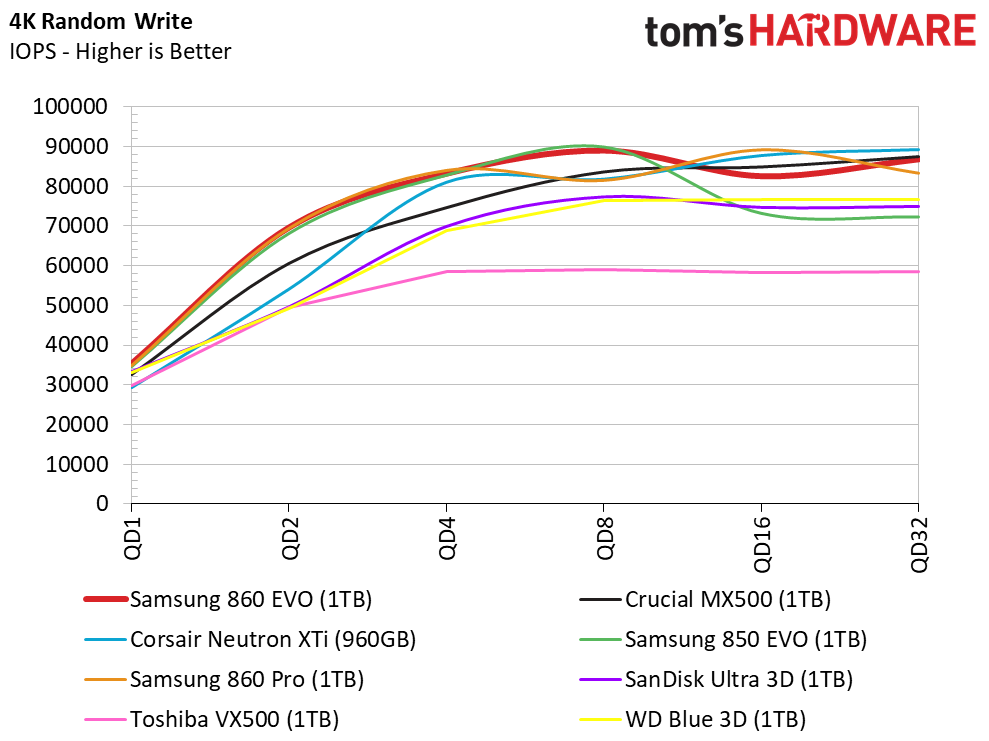

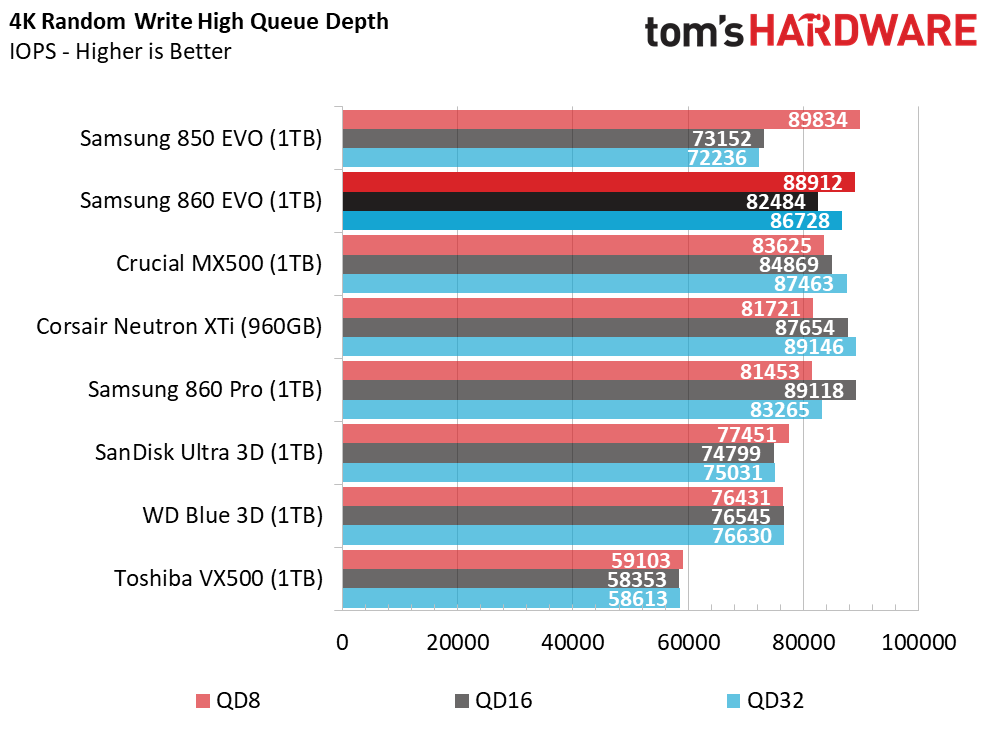
The 1TB 860 EVO dominates the 4KB random write chart at low queue depths. It's even slightly faster than the premium 860 Pro. The EVO's TurboWrite SLC cache is responsible for the extra performance. The biggest difference between the Samsung products and the rest of the drives comes at QD2 and QD4. The 850 and 860 scale efficiently while most of the others fail to ramp as quickly. The MX500 ramps up well to QD2 but starts to regress at QD4.
70% Mixed Sequential Workload
We describe our mixed workload testing in detail here and describe our steady state tests here.

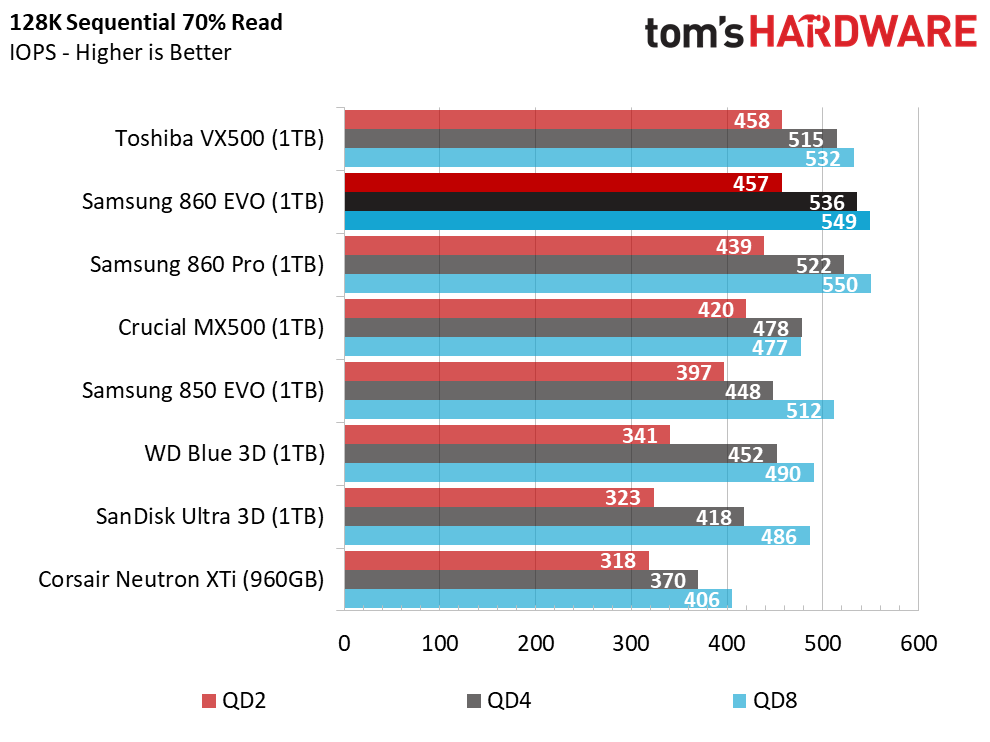
Samsung managed to increase its mixed workload performance by 60 MB/s at QD2. This doesn't seem like a significant leap, but this is a very difficult area to optimize over the SATA bus. The SATA interface can only issue read and write commands at any given time–the bus can't do both simultaneously. Switching between reading and writing involves optimizing for native command queuing and the brisk crossover from one activity to the next.
70% Mixed Random Workload


The 860 EVO trails the outgoing 850 EVO in mixed random performance. The drive also trails the MX500 at QD2, which matches the new 860 Pro with exactly 27,332 IOPS.
Sequential Steady-State

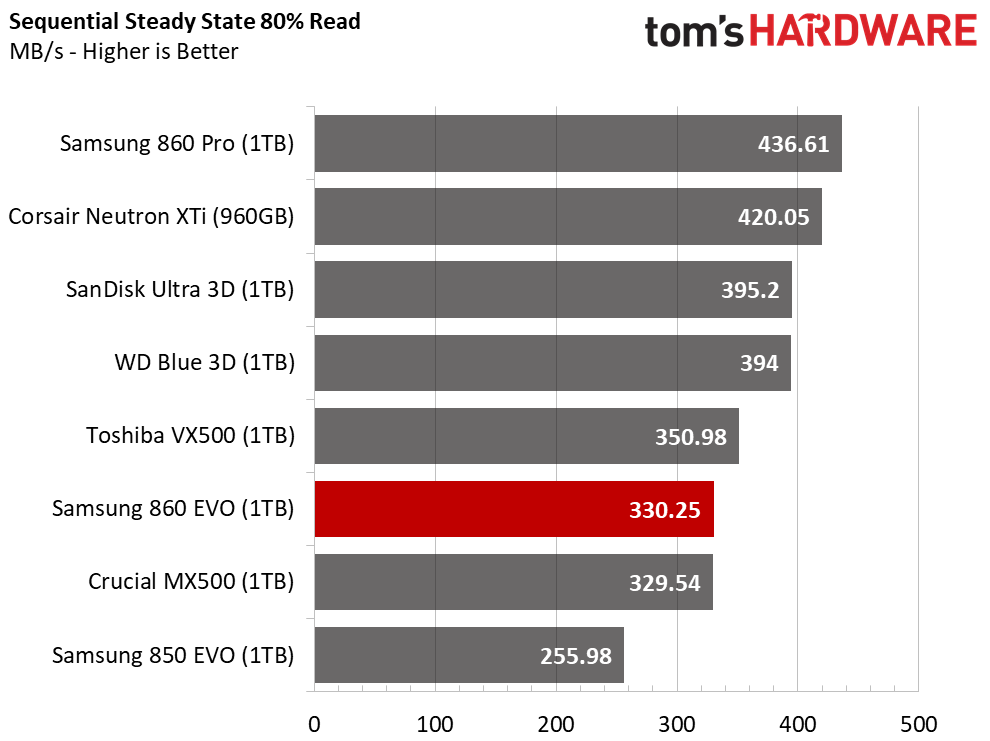

The EVO is the mainstream SATA SSD in Samsung's product line, so it wasn’t designed specifically for workstation use like the 850/860 Pro. We measure 11 workload mixtures but highlight the 70% read mixture as representative of workstation use and the 80% read mixture represents more consumer-focused workloads. The 960 EVO is much better than the 850 EVO. The 1TB MX500 provides identical performance during the read-centric section of the workload (on the left of the chart).
Random Steady-State

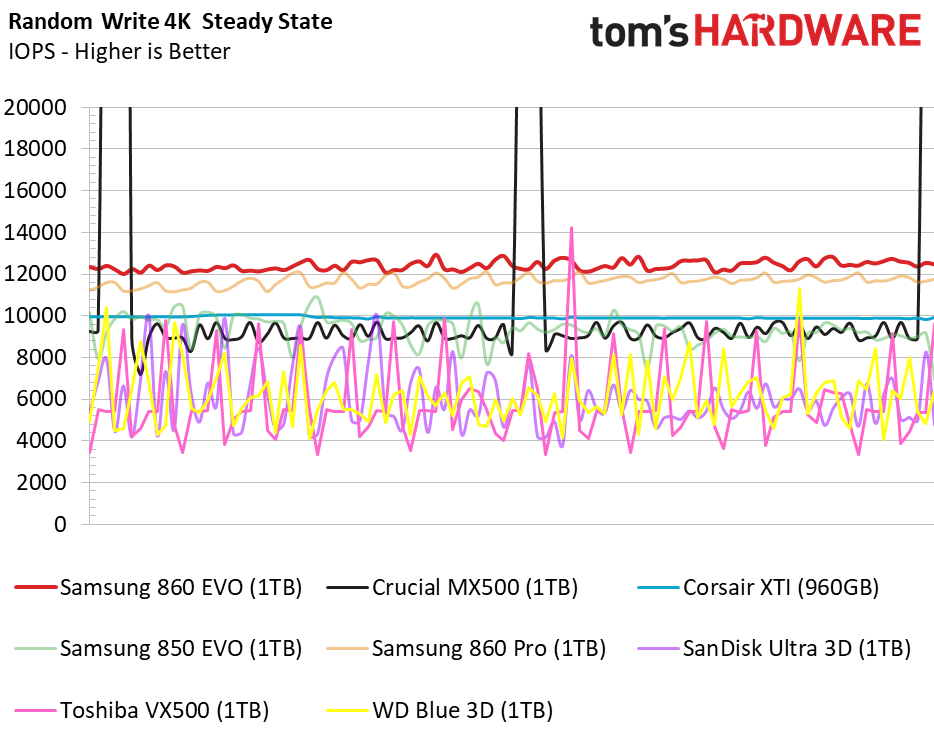
TurboWrite powers the 860 EVO to the highest steady-state random write performance we've measured on a consumer SSD. The new EVO even outperforms the 860 Pro by a small margin, but both have nearly identical consistency. We can recommend the 860 EVO for use in consumer RAID arrays.
PCMark 8 Real-World Software Performance
For details on our real-world software performance testing, please click here.
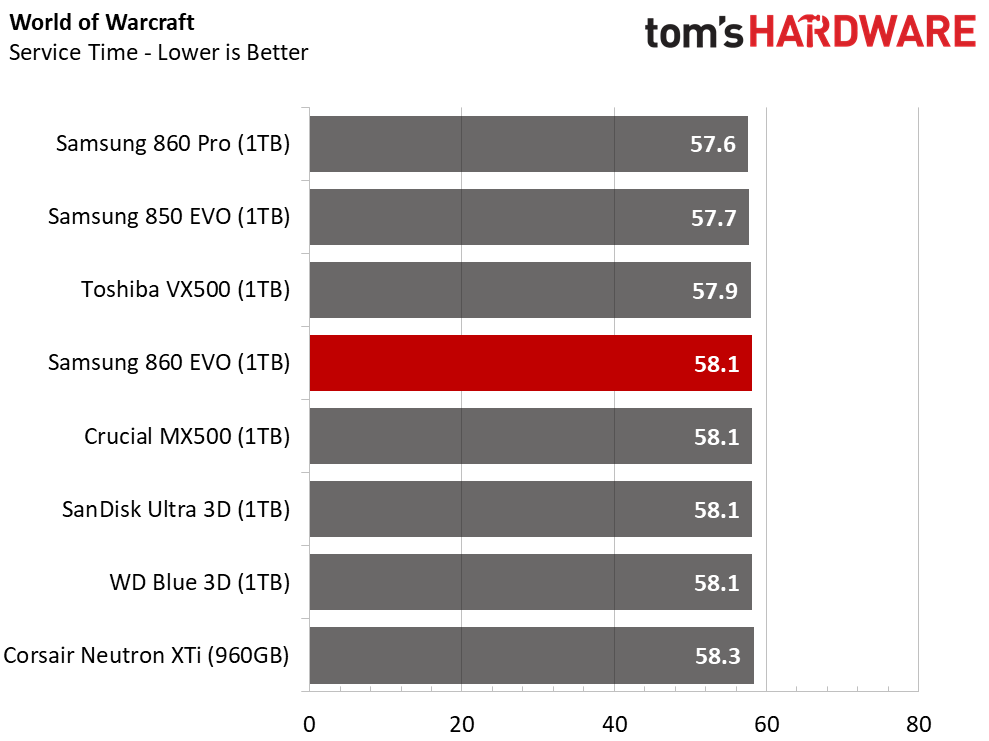
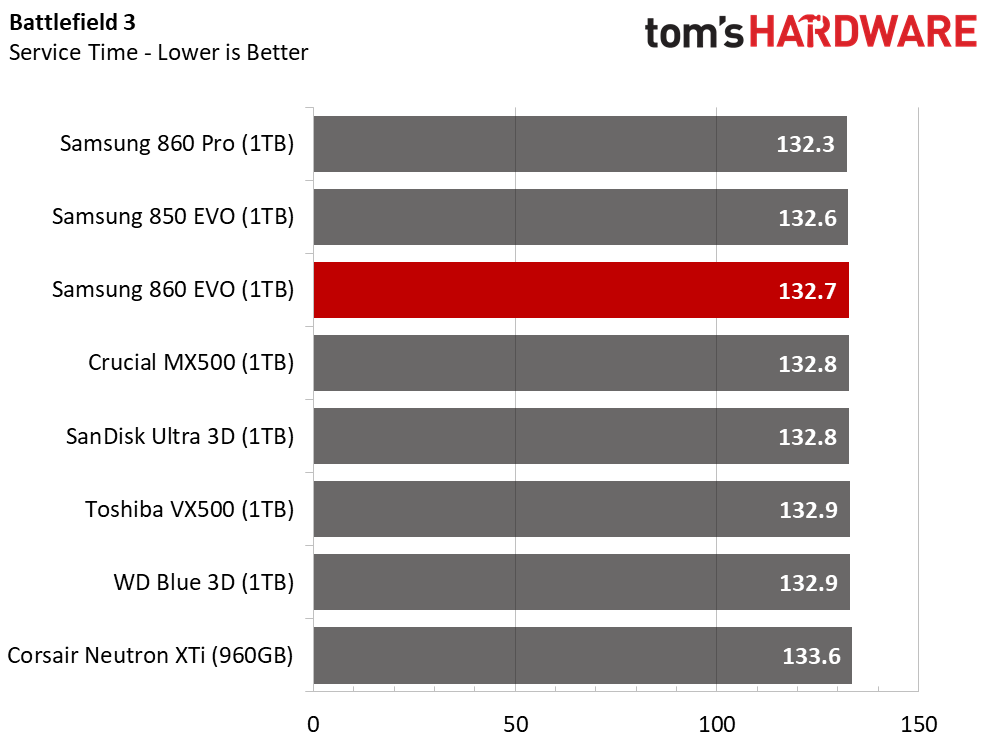
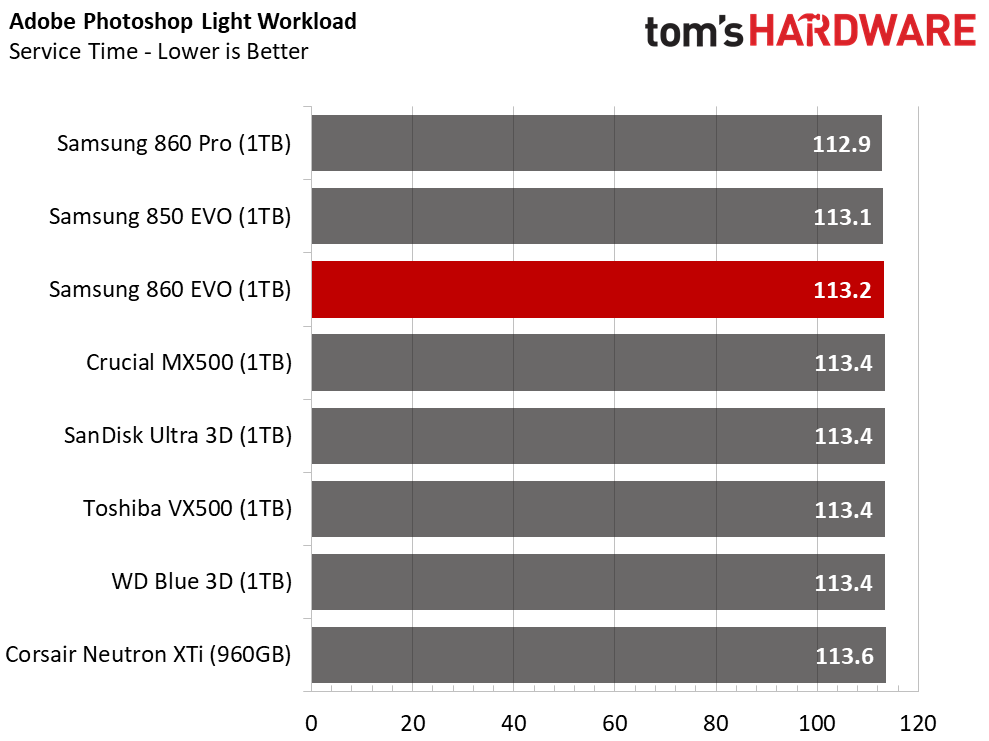
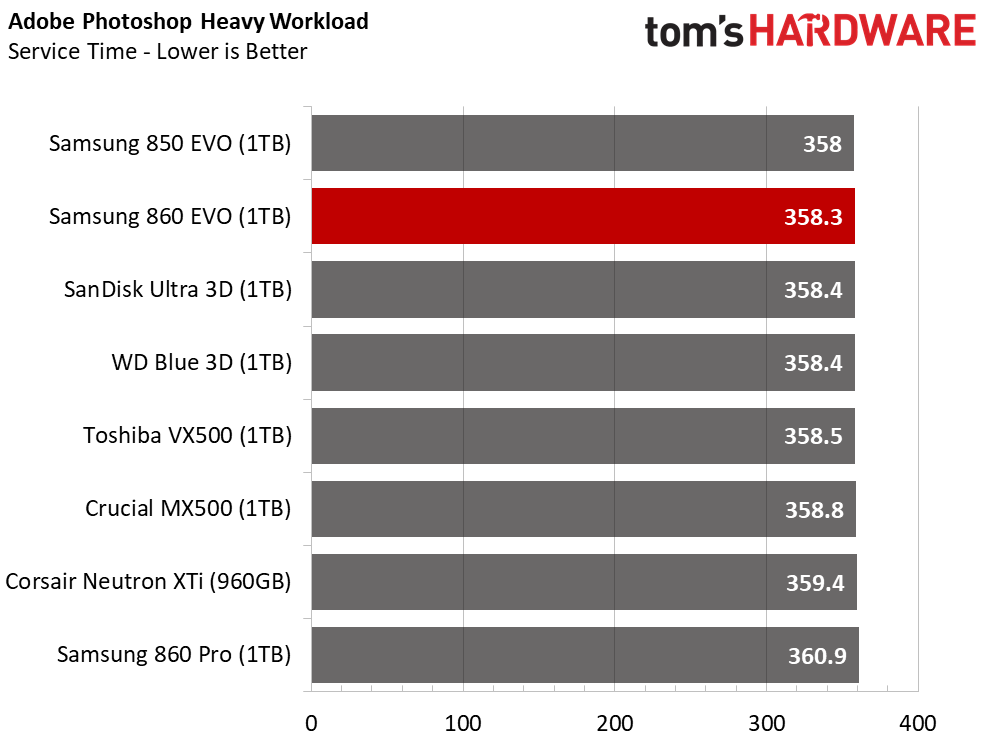
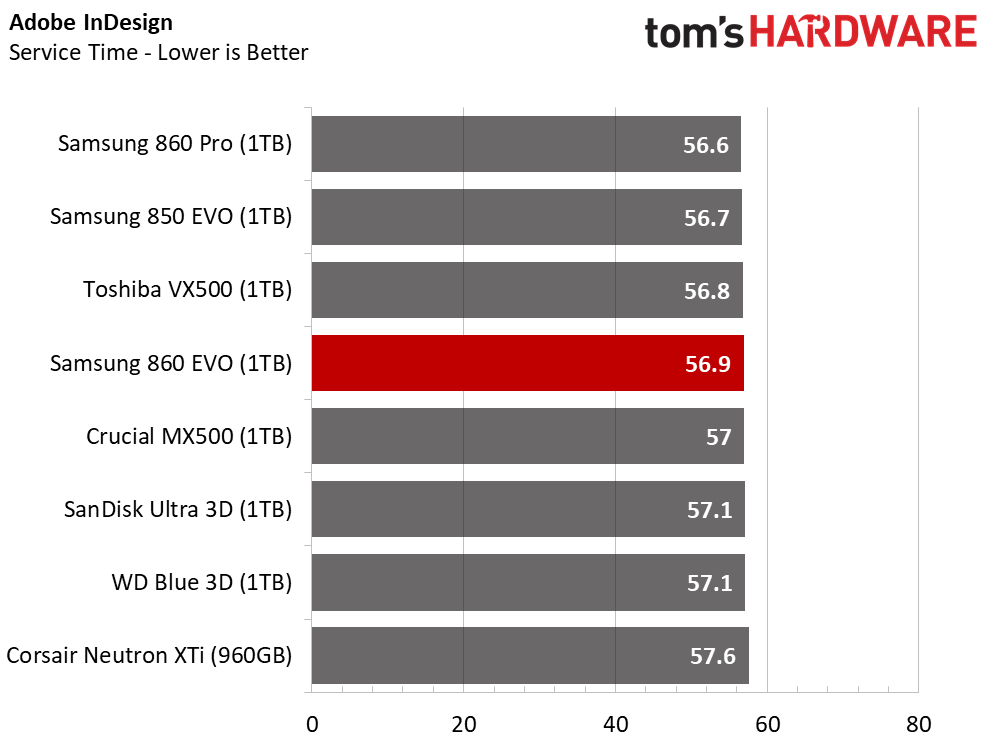

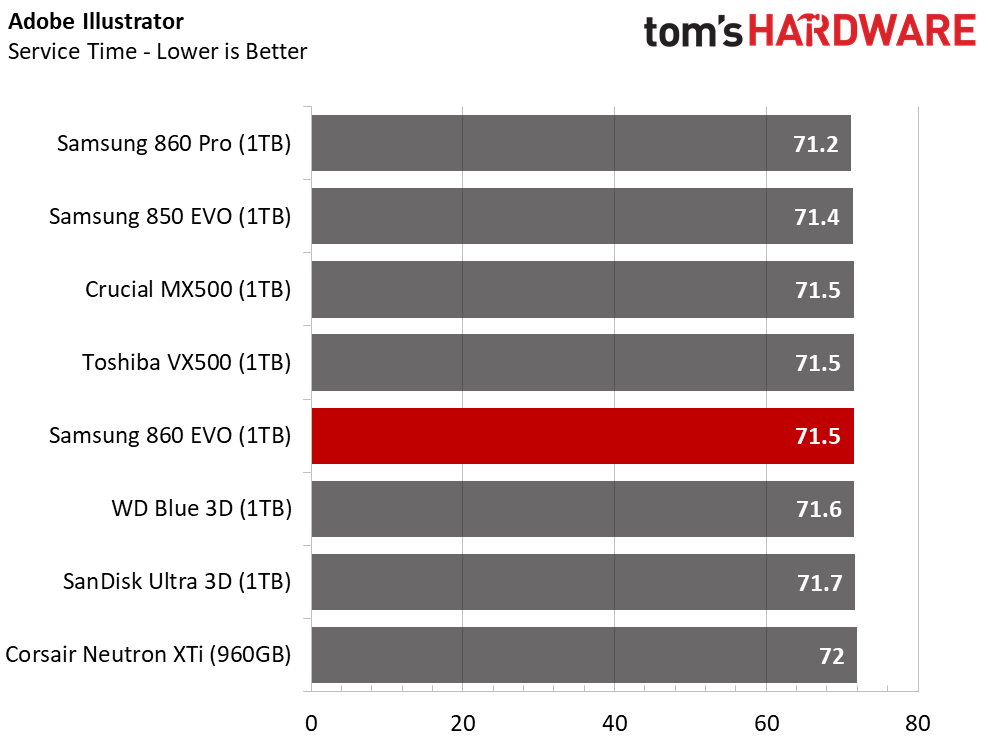
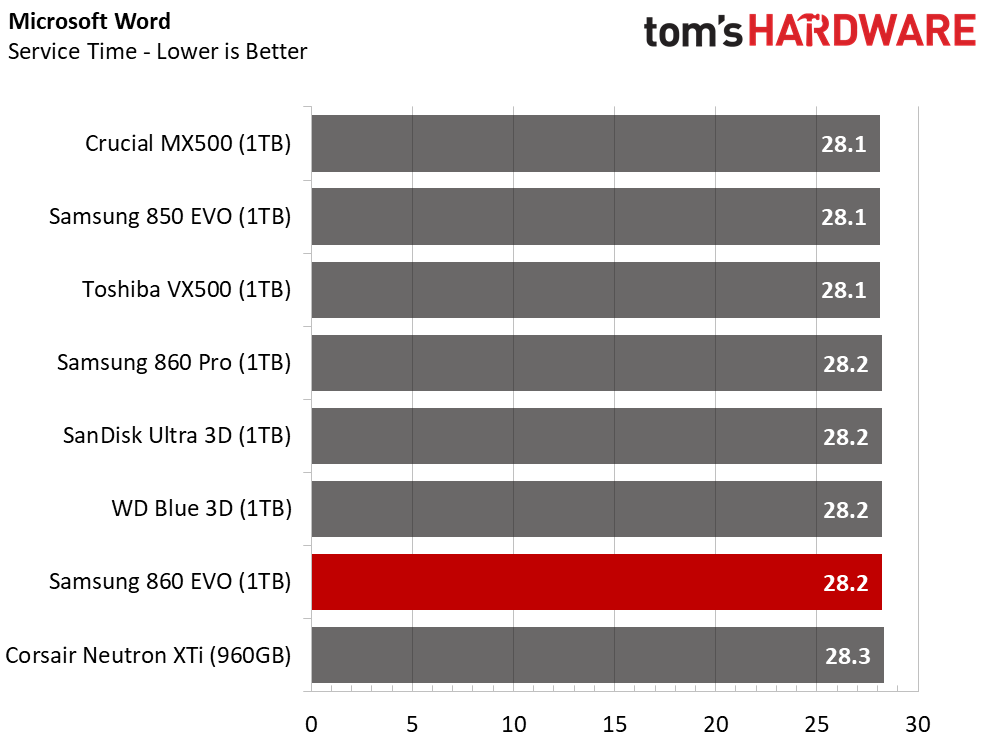
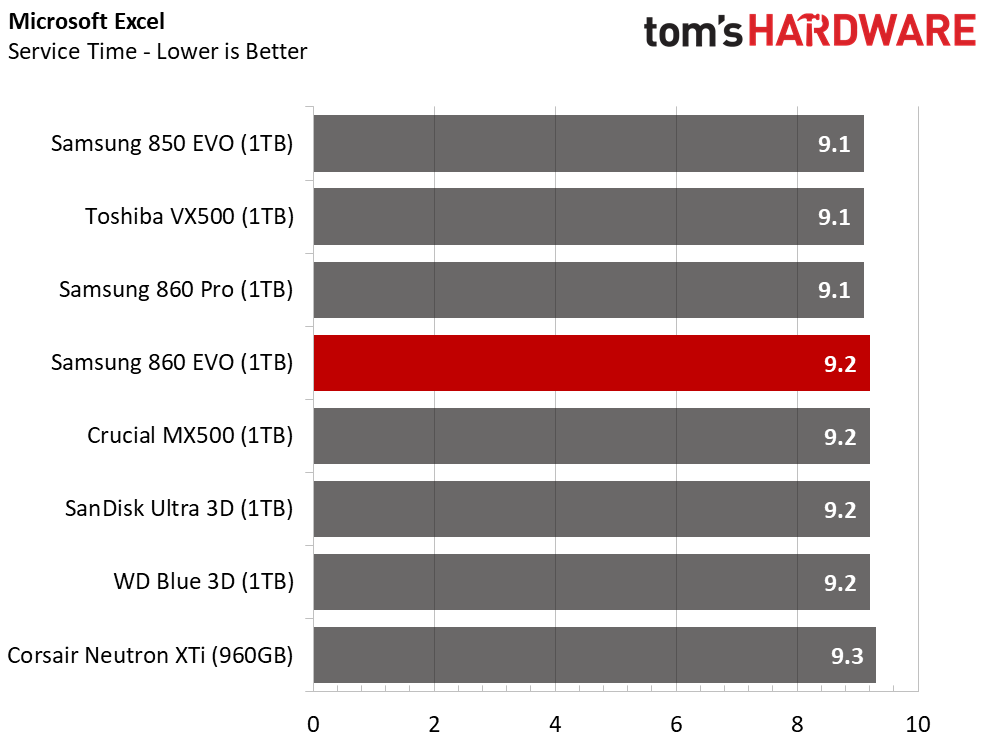
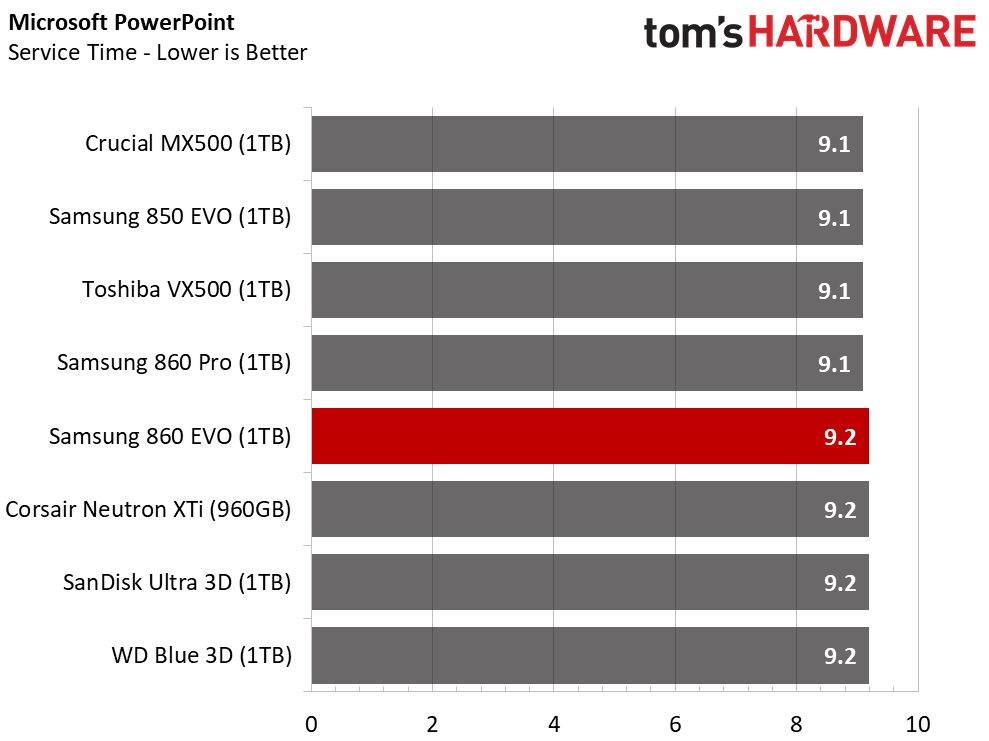
The 860 EVO is not as dominant as the 850 EVO in common everyday workloads. The drive is very good and has its moments, but the new EVO falls in the middle of the charts during many of the individual tests.
Application Storage Bandwidth
Averaging the results and presenting them as a throughput score provides another good view of the slim difference between some of these products. The 860 EVO is only slightly faster than the Crucial MX500 1TB that sports a $70 price break. That means the 860 EVO only offers a mere 2.647% increase in application throughput for a 21% price premium.
PCMark 8 Advanced Workload Performance
To learn how we test advanced workload performance, please click here.
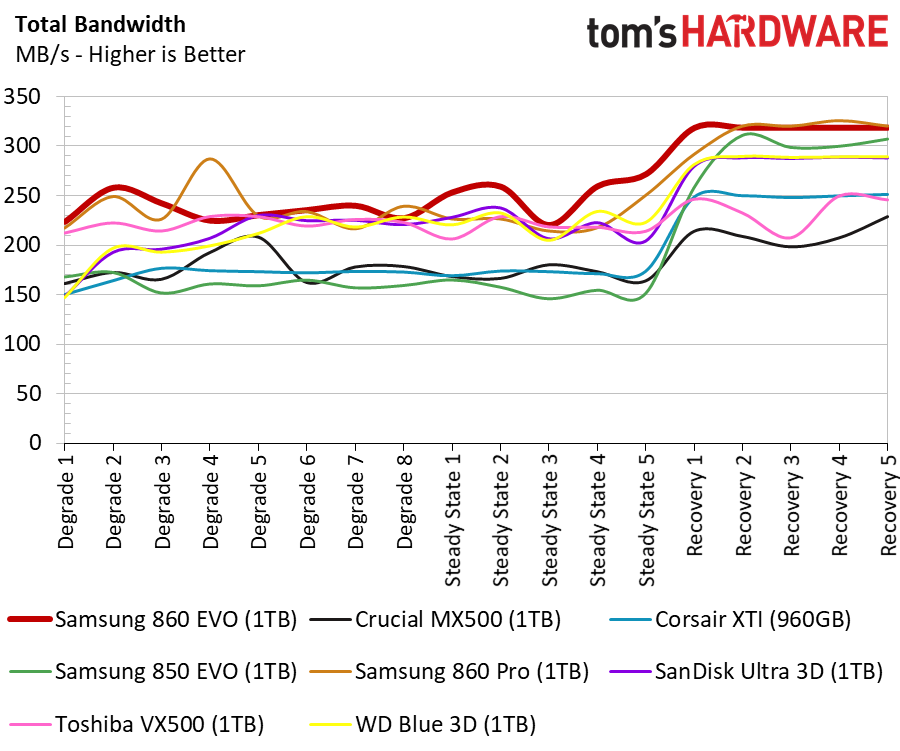
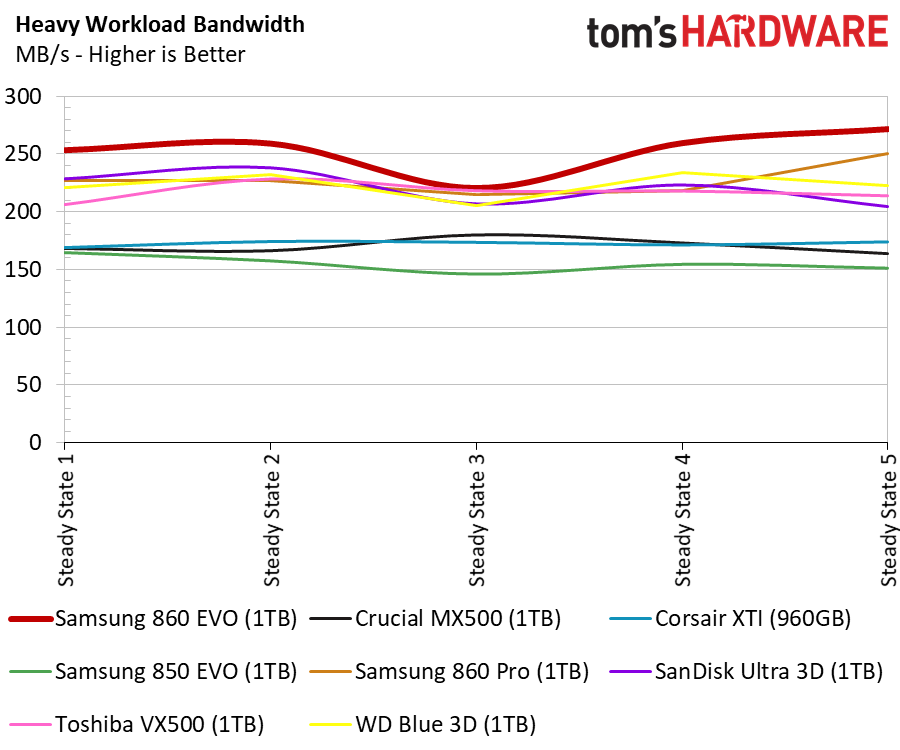
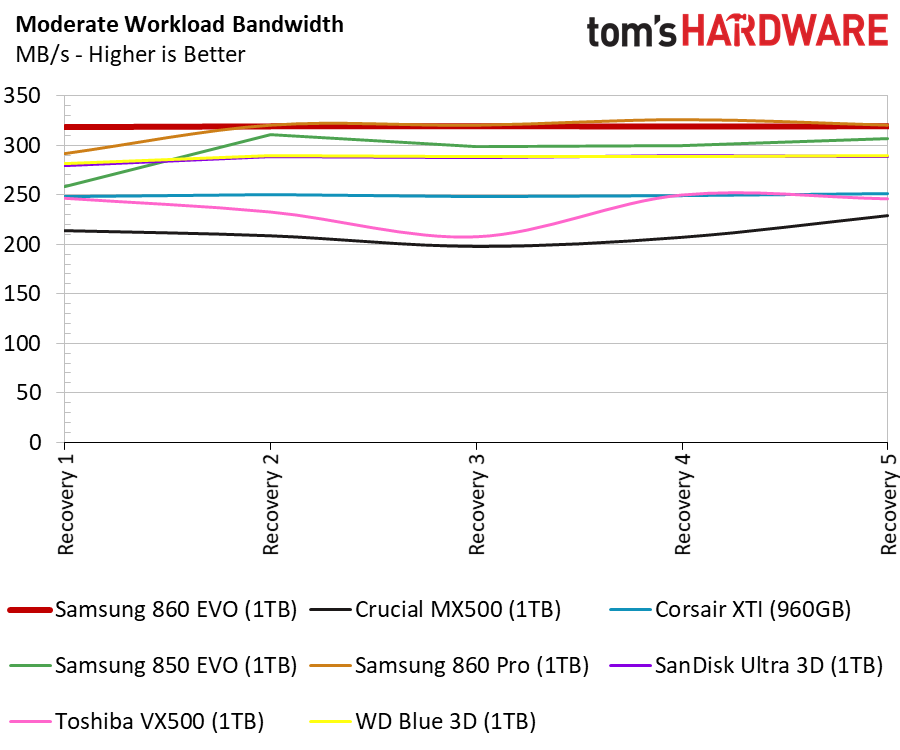
The desktop-focused recovery states provide five minutes of idle time between each test run. The 860 EVO recovers better than the 860 Pro as it eases out of a steady-state condition. The 860 drives are nearly identical and slightly faster than the 850 EVO, SanDisk Ultra 3D, and Western Digital Blue 3D.
Total Service Time
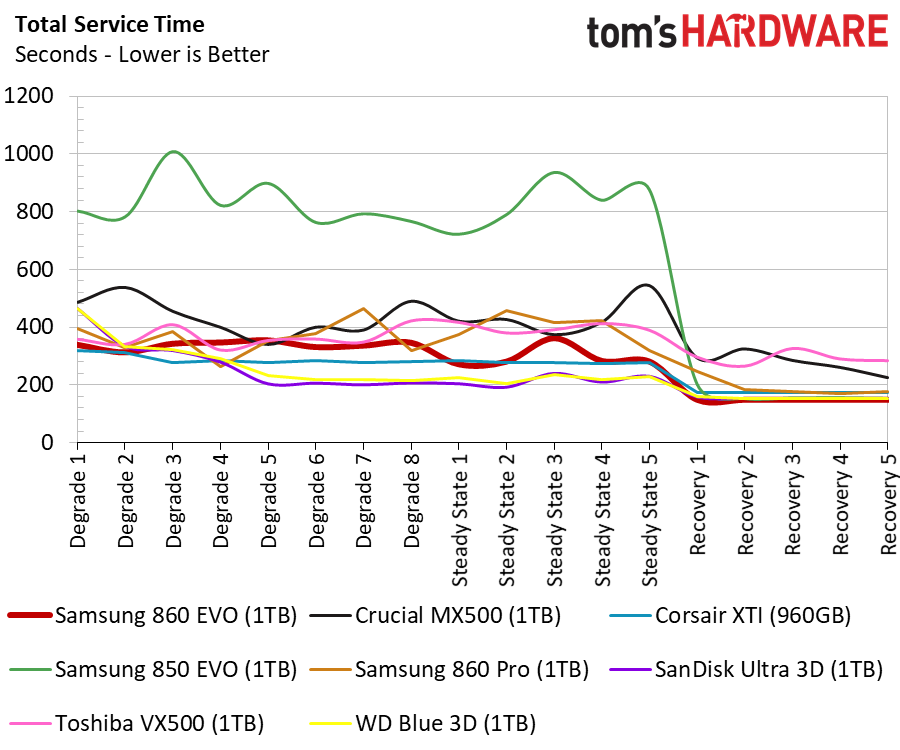
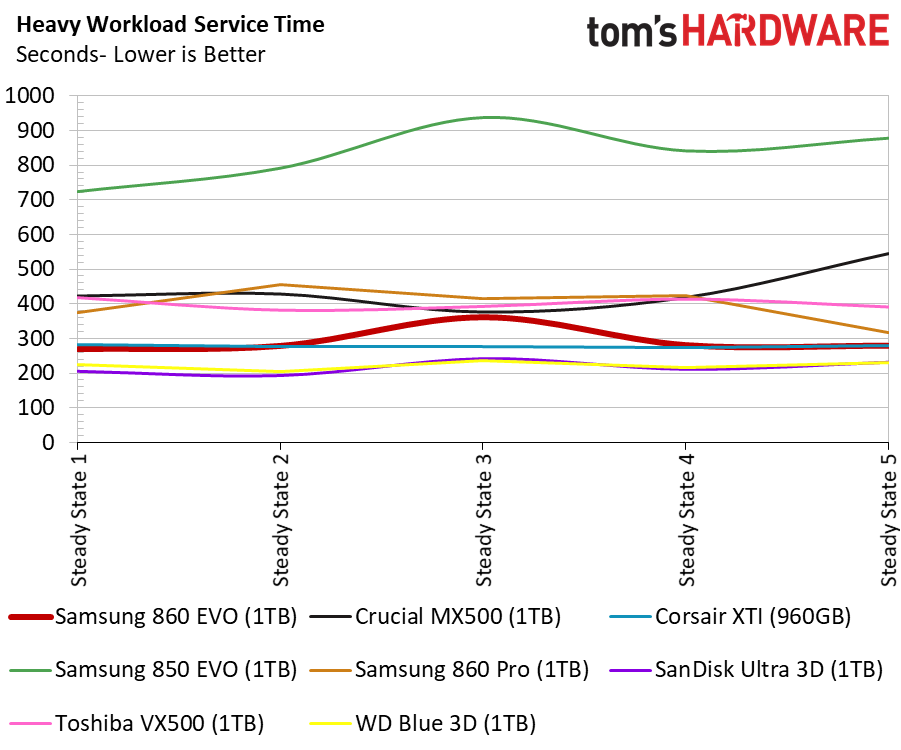
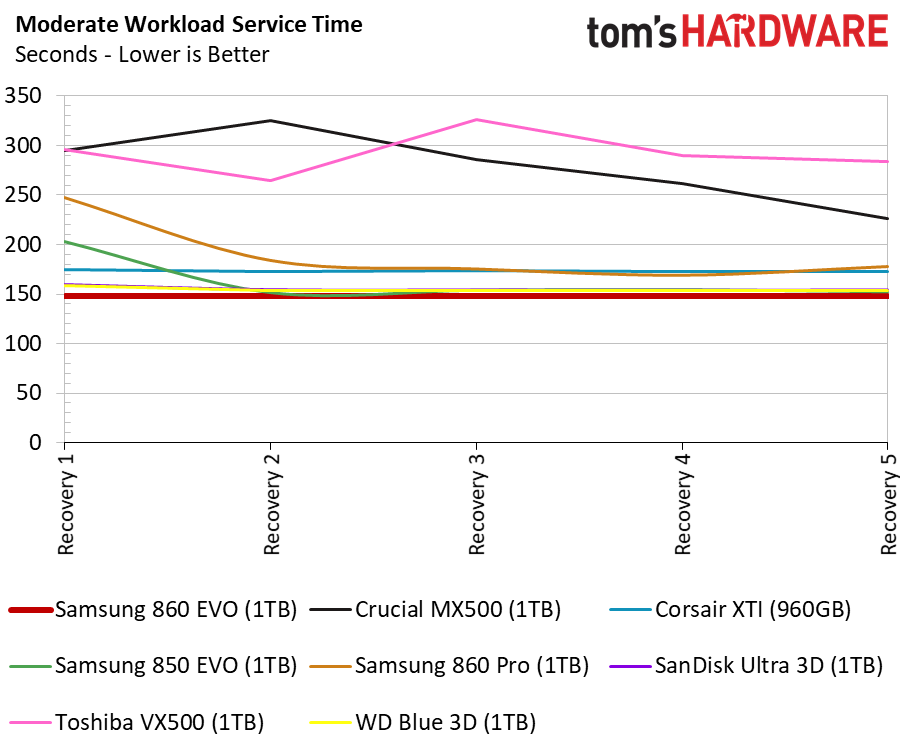
The service time test results show a large gap between the 860 EVO and the MX500 1TB during the recovery stages.
Disk Busy Time
The disk busy time test highlights how Samsung improved the EVO line in heavy workloads. The 860 EVO works for less time to finish the applications. The 850 EVO falls in line with the better products after some idle time, but the 860 EVO never gets out of shape. Samsung introduced the 850 EVO several years ago and it outperformed competing products in the degrade and steady-state tests. These results show how the rest of the industry has caught up and passed the 850 EVO in heavy workloads.
BAPCo SYSmark 2014 SE Responsiveness Test


The 860 EVO beats the impressive 860 Pro. This is one of the reasons why we prefer the EVO family for consumer workloads. The drive will feel faster according to this responsiveness measurement.
BAPCo MobileMark 2012.5 Notebook Battery Life
To learn how we test advanced workload performance, please click here.
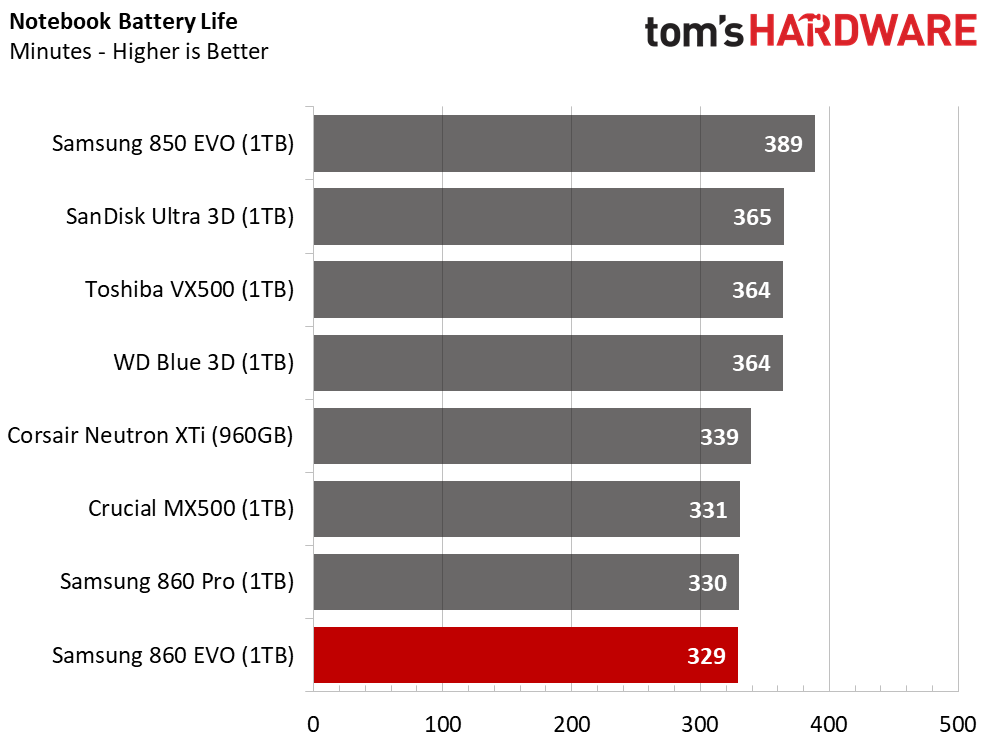
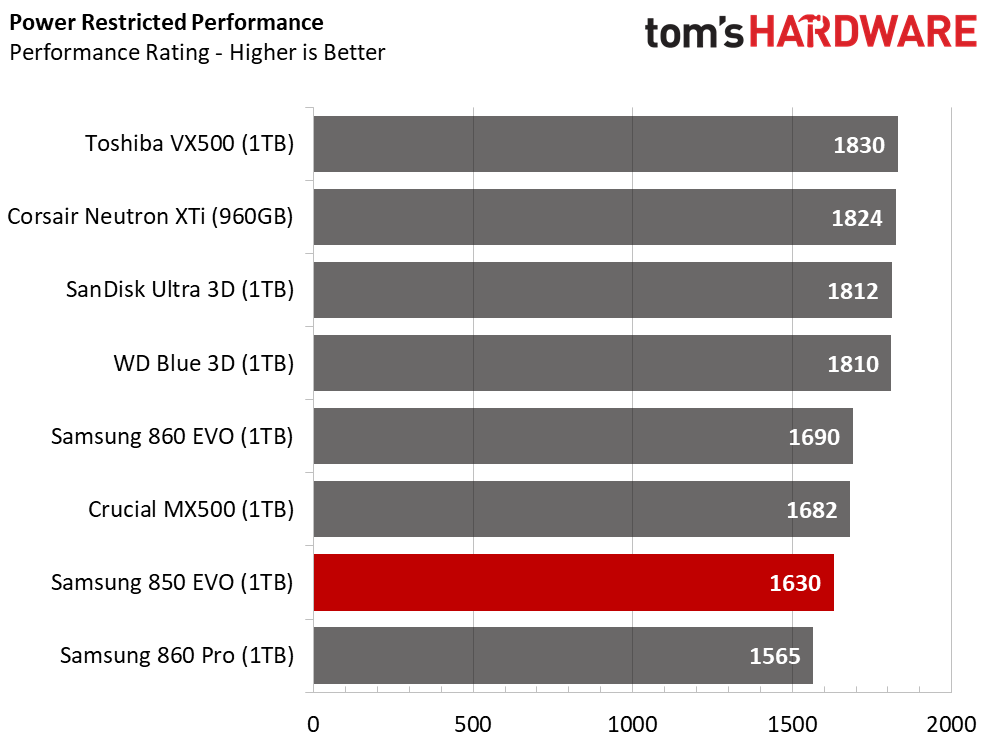
The new 860 line should perform better in our notebook battery life test, but the results don't show that. We were surprised when we tested the 860 Pro, but now we feel the results are accurate after seeing the 860 EVO results. This is an area Samsung will have to address with firmware updates. For now, these are not great drives if you need long laptop battery life.
MORE: Best SSDs
MORE: How We Test HDDs And SSDs
MORE: All SSD Content
Current page: 1TB Class Performance
Prev Page Features and Specifications Next Page 512GB Class Performance
Chris Ramseyer was a senior contributing editor for Tom's Hardware. He tested and reviewed consumer storage.
-
logainofhades I think I would rather have the better Price/GB of an MX300. MX300 has more storage and is cheaper. The 960 evo isn't much more either really, at the 250gb level anyway.Reply
PCPartPicker part list / Price breakdown by merchant
Storage: Samsung - 960 EVO 250GB M.2-2280 Solid State Drive ($118.99 @ SuperBiiz)
Storage: Samsung - 860 Evo 250GB M.2-2280 Solid State Drive ($94.99 @ Amazon)
Storage: Crucial - MX300 275GB M.2-2280 Solid State Drive ($89.89 @ OutletPC)
Total: $303.87
Prices include shipping, taxes, and discounts when availableGenerated by PCPartPicker 2018-02-08 16:21 EST-0500 -
AlistairAB So basically the MX500 is cheaper and even has better random read performance (the only metric i really pay attention to).Reply
Also Samsung doesn't provide warranty service in Canada properly, a caution to readers. (Search for horror stories about the 960 EVO warranty process in Canada at redflagdeals if you want more... basically they stonewall you requiring you to return to retailers, which is how it works in Europe, not in Canada).
Buy Crucial. -
Dark Lord of Tech Sticking with my Samsung 960 EVO Series 1TB too , crazy fast , but the 860 is another solid release from Samsung , best on the market in terms of reliability.Reply -
Martell1977 So it seems that this is a 850 EVO but with higher bandwidth and warranty. I'm glad to see that my 850 EVO 500gb is still one of the best. Seems that performance for these drives has been stagnate for a while now.Reply -
Radar_1 If I decide to head to the store and purchase a new SSD, the 850 EVO appears to still be the best bang for your dollar.Reply -
JonDol "The 860 EVO has half the endurance of the new 860 Pro, but it's still quite a bit more than competing products. It's a good argument, but who really cares?" Well, I do. For that reason I only buy the Pro ones and I'd buy the EVOs above all the others if the Pro weren't available.Reply
About the title: I wasn't even aware that Samsung had lost the leading spot :-)
